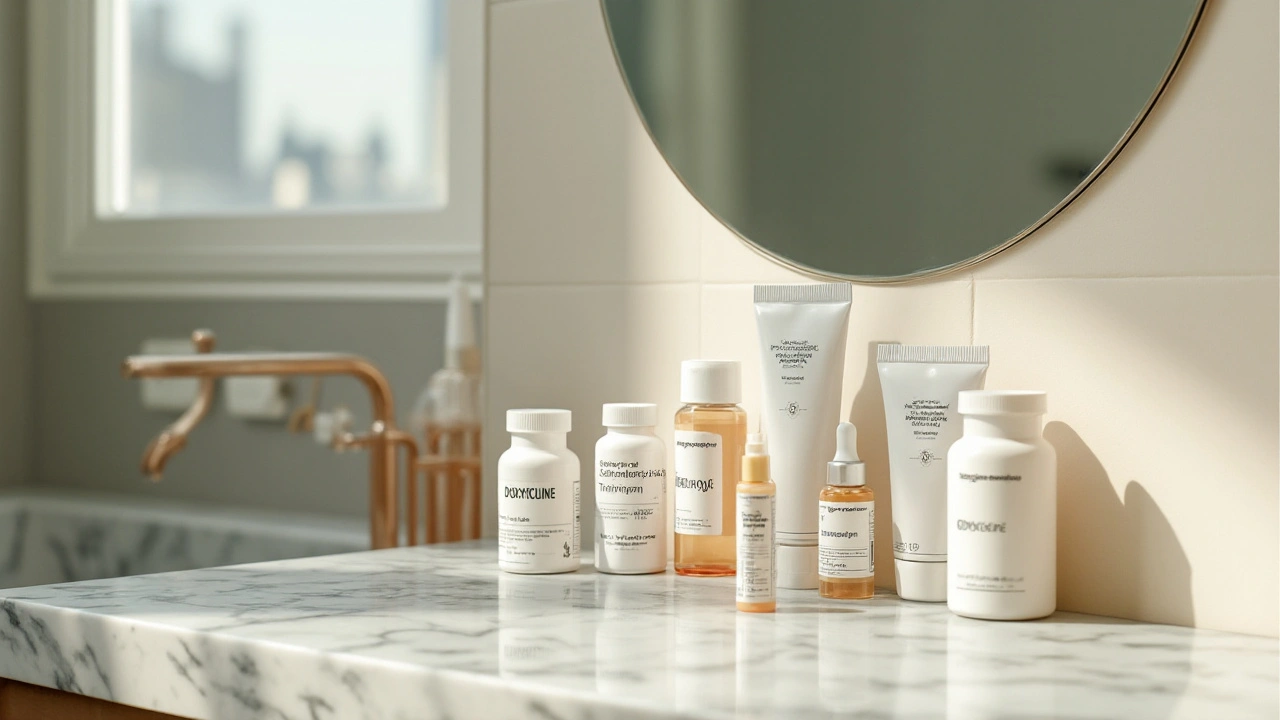Isotroin Alternatives: Real‑World Acne Solutions You Can Try Today
If you’ve heard about Isotroin (the brand name many use for isotretinoin) but worry about its side effects, you’re not alone. Lots of people ask for safer or cheaper ways to clear stubborn acne. Below are the most common alternatives that actually move the needle.
Topical Retinoids and Over‑the‑Counter Options
Retinoids like adapalene (Differin) and tretinoin creams work by speeding up skin turnover. You can buy a low‑dose adapalene gel without a prescription in many countries, which makes it a simple first step. Apply a pea‑sized amount at night, start with two times a week, and watch your breakouts calm down within weeks.
Another easy pick is benzoyl peroxide combined with salicylic acid. These ingredients unclog pores and kill bacteria. Most drugstores stock 2.5%–10% peroxide gels; just keep the concentration low to avoid irritation.
Prescription Oral Medications
If you need something stronger than a cream, doctors often prescribe oral antibiotics such as doxycycline or minocycline. They reduce inflammation and keep acne‑causing bacteria in check. A typical course lasts three to four months; after that you can taper off.
Hormonal pills are a go‑to for women with hormonal acne. Combined estrogen‑progestin contraceptives balance skin hormones and often clear breakouts within two menstrual cycles. Talk to your GP about which brand fits your health profile.
Spironolactone is another hormone blocker that works well for adult females. It blocks androgen receptors, meaning less oil production and fewer pimples. The dose starts low (25‑50 mg) and can be adjusted based on results.
Natural and Lifestyle Approaches
Tea tree oil has mild antibacterial properties. Dilute a few drops in a carrier oil and spot‑apply to inflamed spots. It won’t replace a prescription, but many users see less redness after consistent use.
Diet matters too. Cutting down on high‑glycemic foods—white bread, sugary drinks—can lower insulin spikes that trigger excess oil. Adding omega‑3 rich foods like salmon or flaxseed may also calm inflammation.
Stress management is often overlooked. Stress hormones can worsen acne, so simple habits like a 10‑minute walk or breathing exercises each day help keep skin clear.
How to Choose the Right Alternative
Start with what you already have on hand—an over‑the‑counter retinoid or benzoyl peroxide. If those don’t work after a month, schedule a brief telehealth visit for an oral antibiotic or hormonal option.
Always check for contraindications: doxycycline isn’t great if you’re pregnant, and spironolactone can raise potassium levels. A quick chat with your pharmacist can flag red flags before you start.
Remember that acne treatment is a marathon, not a sprint. Most alternatives need 6‑12 weeks to show real improvement, so patience pays off.
Whether you prefer a cream, a pill, or a natural fix, plenty of Isotroin alternatives exist to keep your skin clear without the heavy side effects of isotretinoin.
Explore the top 5 alternatives to Isotroin (Isotretinoin) for acne treatment in 2025. This guide provides a detailed comparison of Doxycycline, Spironolactone, Minocycline, Sulfamethoxazole/Trimethoprim, and Erythromycin, including their pros and cons, to help you make an informed decision.


 Medications
Medications